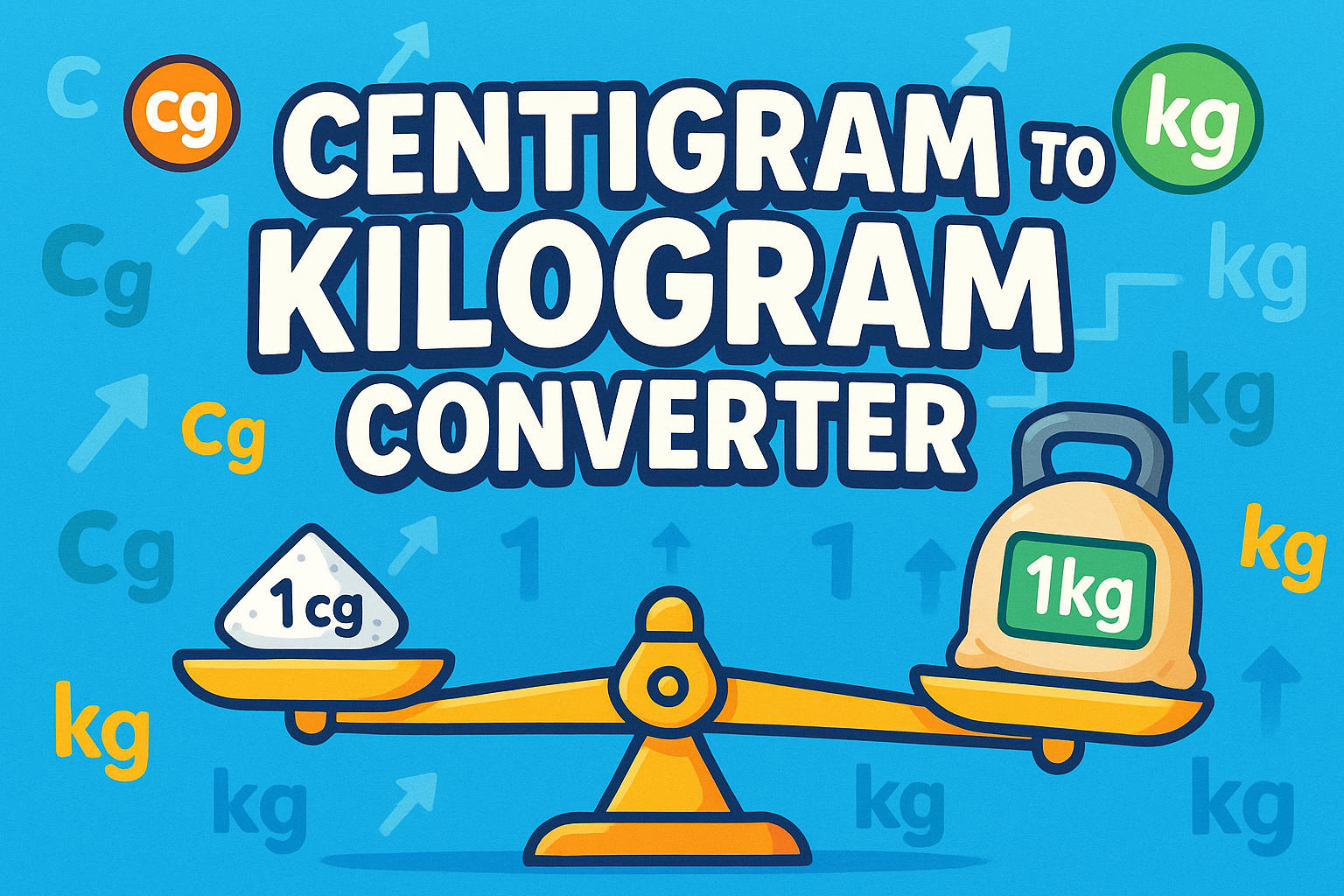centigram to kilogram - How to convert cg to kg
Converting between metric units like centigram to kilogram (cg to kg) may seem like a small task, but when accuracy counts—whether in science labs, food production, or logistics—every digit matters. This guide will show you how to convert cg to kg in seconds and help you understand the differences between the two units.

A Centigram and a Kilogram
A centigram (cg) is a metric unit of mass equal to 0.01 grams or 1/100 of a gram. It’s used in fields where precision is essential—such as pharmacology, chemistry, and micro-measurement settings.
A kilogram (kg) is the base unit of mass in the International System of Units (SI). It is widely used in every industry—from groceries to science to international shipping.
Kilograms offer a practical scale for measuring everyday items like produce, body weight, and industrial materials. You’ll see it on your bathroom scale, a bag of rice, or even in freight calculations.
Need to explore more metric mass units? Use our Weight Converter for instant access to multiple conversions.
How to Convert cg to kg
The formula to convert centigram to kilogram is:
1 cg = 0.00001 kg
Example:
If you have 250,000 cg, the conversion would be:
250,000 × 0.00001 = 2.5 kg
Too much math? Try our instant Conversion Tool to handle any cg to kg calculation with zero effort.
Want to practice other common metric conversions? Check out Gram to Kilogram for quick comparisons.
Did you know?
-
A centigram is roughly the weight of a single grain of salt. That’s how small and precise it is!
-
A kilogram is the only SI base unit still defined by a physical constant—the Planck constant, which ties mass to quantum physics.
-
Jewelers and lab techs often rely on centigram scales to ensure that gemstones, gold, or medications are dosed precisely.
-
Competitive weightlifting events list weights in kilograms—down to 0.5 kg—highlighting how precision is just as important in sports as it is in science.
-
In baking competitions like The Great British Bake Off, ingredients are typically weighed in grams and kilograms for consistency—though micro-scale tests during R&D stages might use centigrams.
A Metric Mistake at the International Space Station
In 2018, during routine resupply for the International Space Station (ISS), a miscalculated dry food package was discovered—one that weighed significantly more than intended. The culprit? A metric entry error: centigrams were entered instead of kilograms in one supplier’s logistics system.
The inventory flagged a nutritional supplement pack as 500 kg instead of 5 kg, resulting in emergency adjustments to the manifest. While no harm was done, the mislabeling caused delays and re-verification across all onboard weight-sensitive cargo.
This real-life event shows how something as simple as converting cg to kg correctly can prevent costly delays—even in outer space.

Conclusion
Converting centigram to kilogram (cg to kg) might seem simple, but it plays a vital role in science, shipping, food, and medicine. The formula is straightforward—1 cg = 0.00001 kg—but accuracy is everything.

